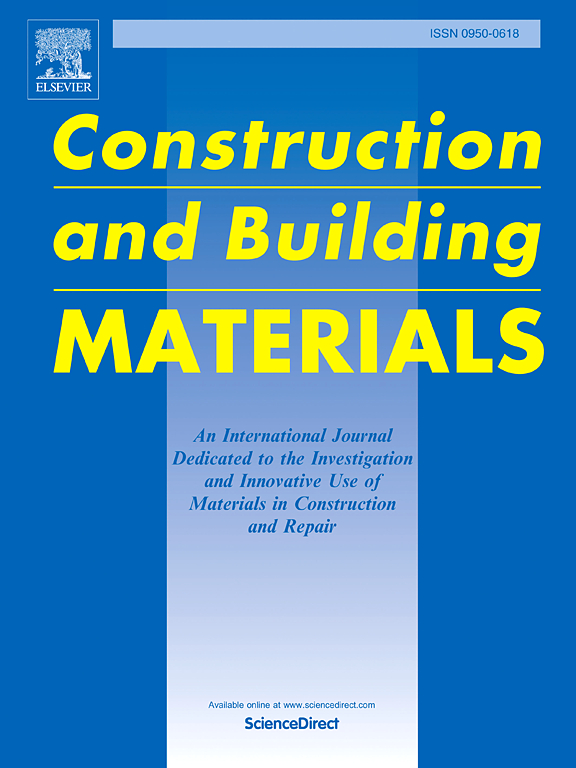The role of the gasification forest fly ash (GFF) in geopolymerization
IF 7.4
1区 工程技术
Q1 CONSTRUCTION & BUILDING TECHNOLOGY
引用次数: 0
Abstract
The utilization of gasification biomass for renewable energy generation is increasing, nevertheless the ash produced from the process seldom repurposed and discarded in landfills, which imposes a potential risk of environmental contamination. Therefore, the objective of this research is to develop a novel type of geopolymer utilizing gasification forest fly ash (GFF) as a precursor. This GFF-based geopolymers could be used as alternative of ordinary Portland cement (OPC) to reduce both the global CO₂ emissions, and the depletion of natural resources. The geopolymers were synthesized using a powder component from Metakaolin (MK) (control mix), a hybrid geopolymer (MK and GFF), and a solo GFF, along with an alkaline activator. The resultant specimens were subjected to various characterization techniques: setting time, solubility, mechanical properties, X-ray diffraction analysis, Scanning Electron Microscope, Energy-dispersive X-ray spectroscopy, and thermogravimetric analysis. As the results demonstrate that the introduction of GFF as a precursor significantly reduced the setting time of the geopolymer. The high content of alkali metals in the GFF plays a major role in accelerating both the setting and hardening processes of the geopolymer paste. Geopolymers with maximum mechanical performance were produced by replacing 20 % of MK with GFF as precursor (GFF-20). Compared with MK-based geopolymers (GFF-0), the compressive strength of GFF-20 increased from 38 MPa and 37.3 MPa to 44.2 MPa and 41.7 MPa under sealed and immersion conditions respectively at 28 days. In addition, the flexural strength of GFF-20 increased from 6.2 MPa and 5.5 MPa up to 7.2 MPa and 6.3 MPa at same conditions and curing age. The microstructure and phase composition were completely altered by replacing the MK with GFF. The geopolymers with only GFF (GFF-100) demonstrate a compressive strength of 16.7 MPa under sealed conditions and 12.5 MPa under immersion conditions at 28 days, confirming that GFF can serve as a primary precursor for geopolymerization. This research shows the importance of utilizing GFF as precursor of geopolymer, to improve mechanical properties, as well as the obvious effect on microstructure and the formation of strong geopolymeric binders.
求助全文
约1分钟内获得全文
求助全文
来源期刊

Construction and Building Materials
工程技术-材料科学:综合
CiteScore
13.80
自引率
21.60%
发文量
3632
审稿时长
82 days
期刊介绍:
Construction and Building Materials offers an international platform for sharing innovative and original research and development in the realm of construction and building materials, along with their practical applications in new projects and repair practices. The journal publishes a diverse array of pioneering research and application papers, detailing laboratory investigations and, to a limited extent, numerical analyses or reports on full-scale projects. Multi-part papers are discouraged.
Additionally, Construction and Building Materials features comprehensive case studies and insightful review articles that contribute to new insights in the field. Our focus is on papers related to construction materials, excluding those on structural engineering, geotechnics, and unbound highway layers. Covered materials and technologies encompass cement, concrete reinforcement, bricks and mortars, additives, corrosion technology, ceramics, timber, steel, polymers, glass fibers, recycled materials, bamboo, rammed earth, non-conventional building materials, bituminous materials, and applications in railway materials.
 求助内容:
求助内容: 应助结果提醒方式:
应助结果提醒方式:


